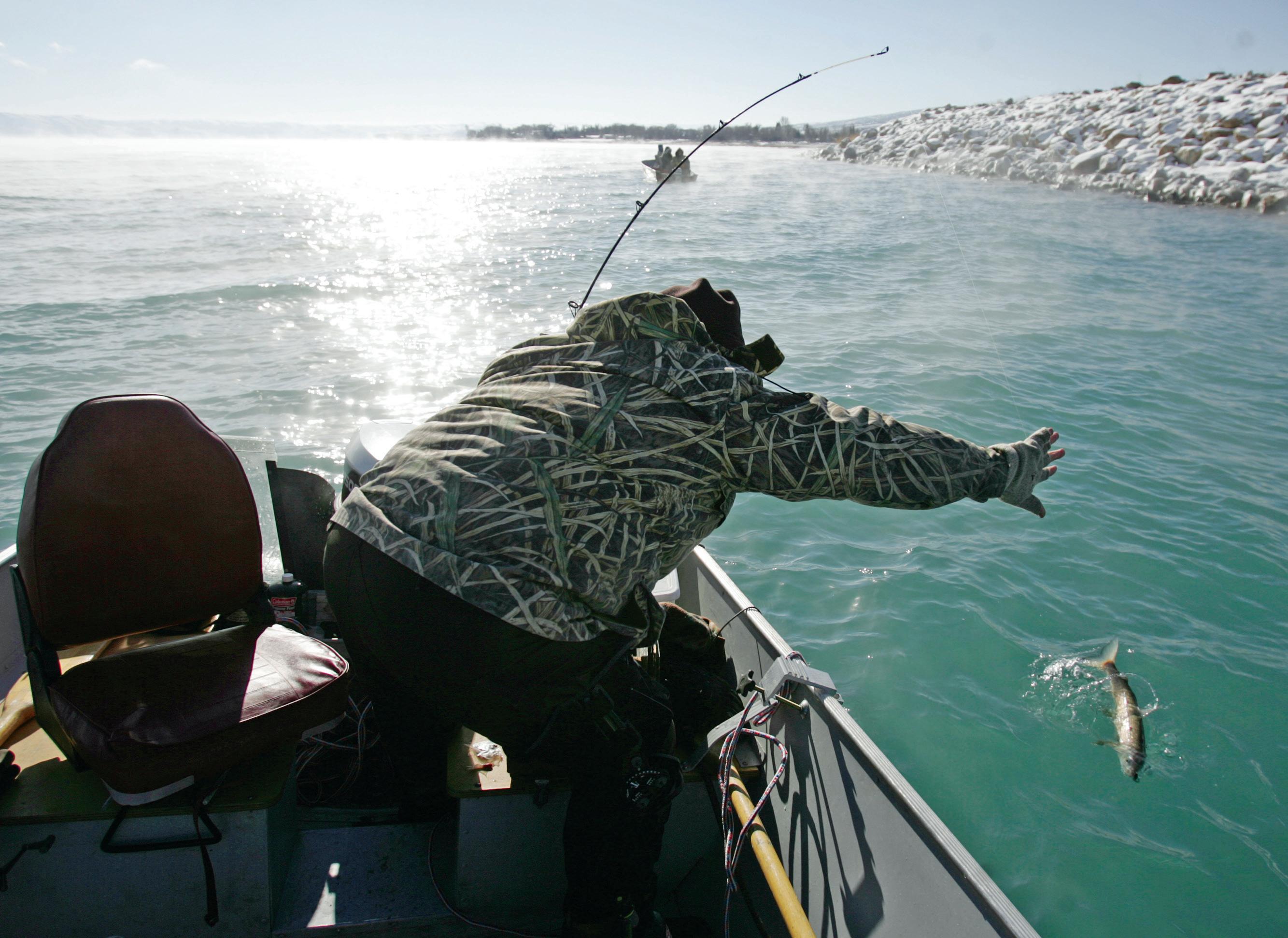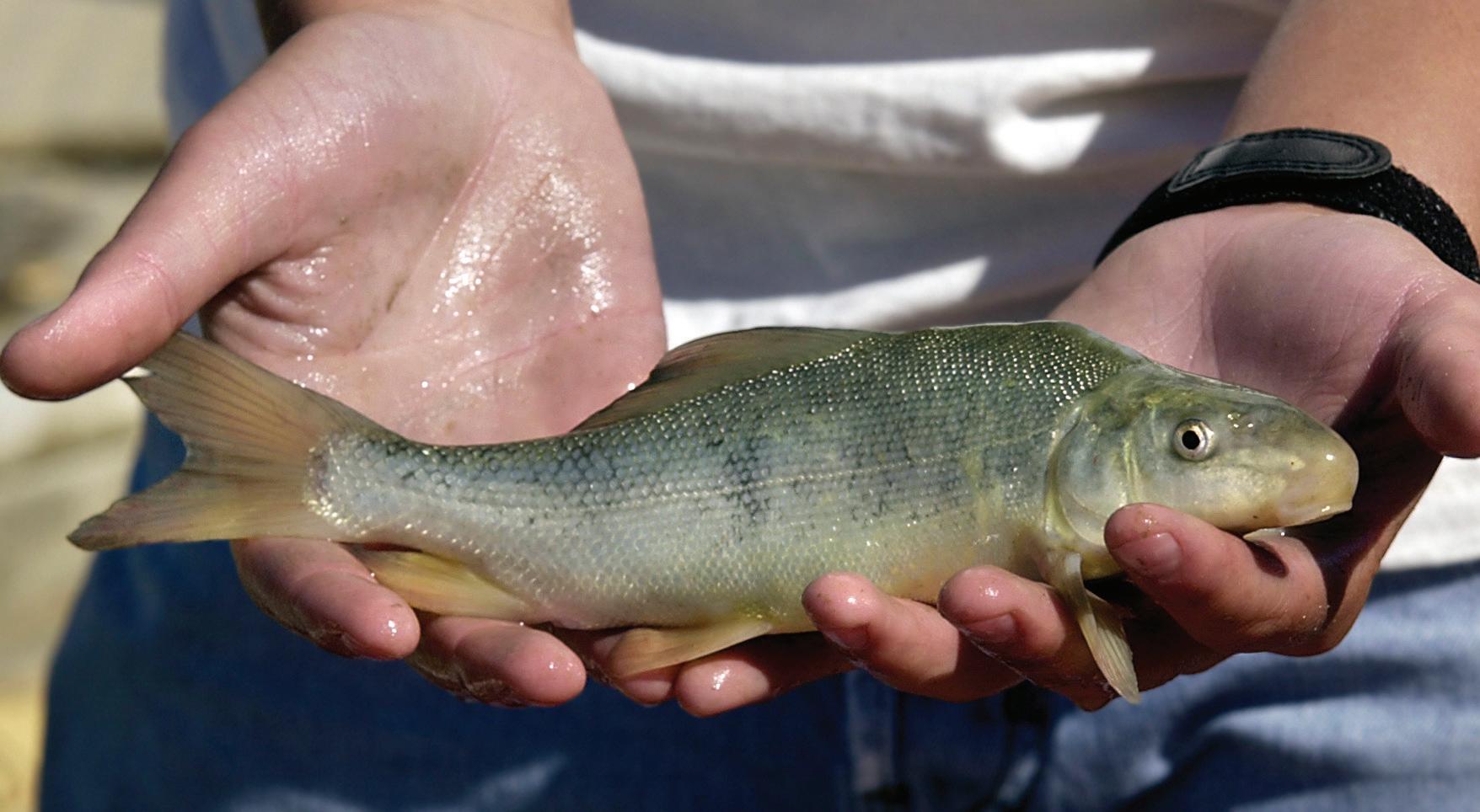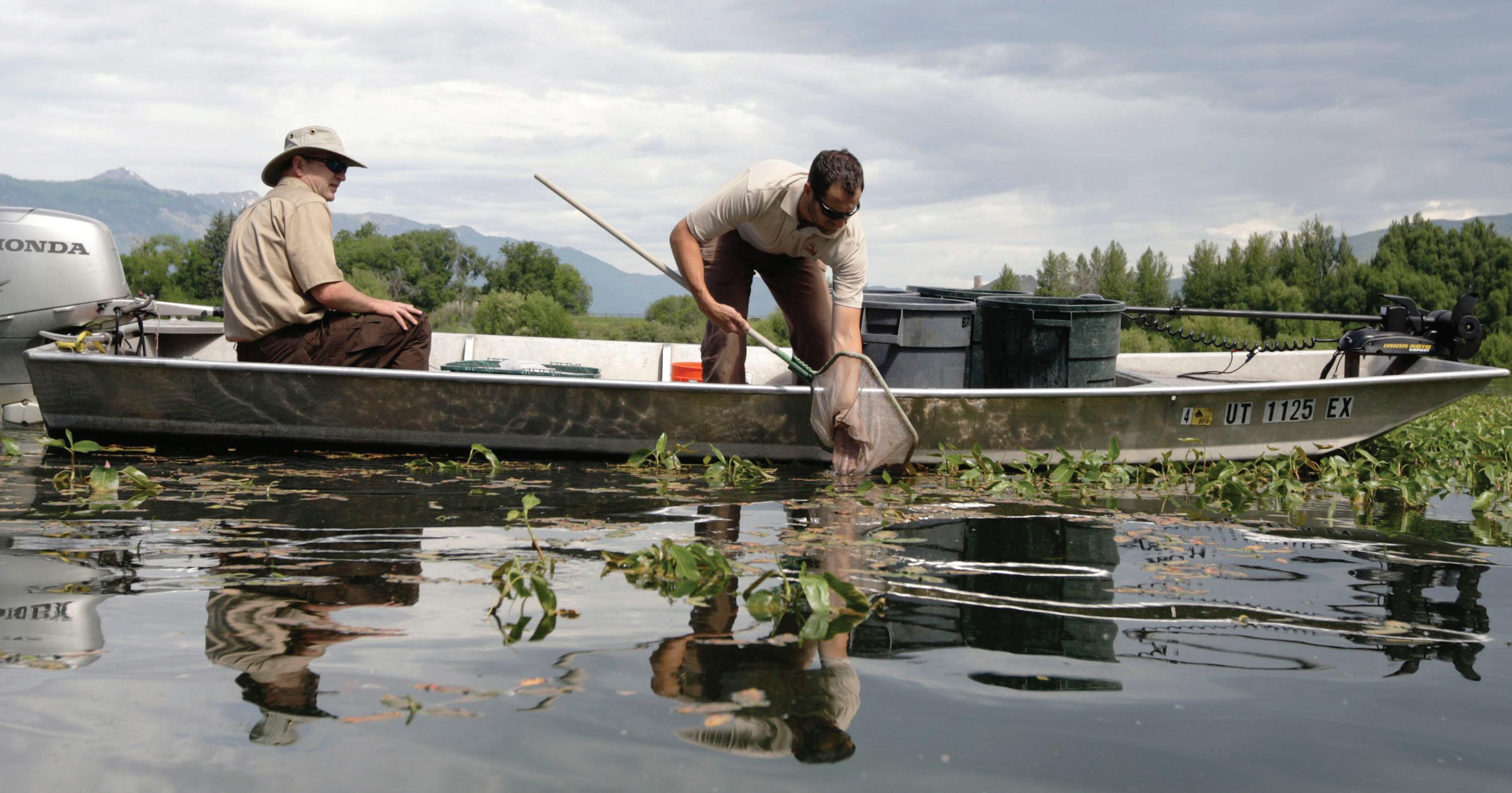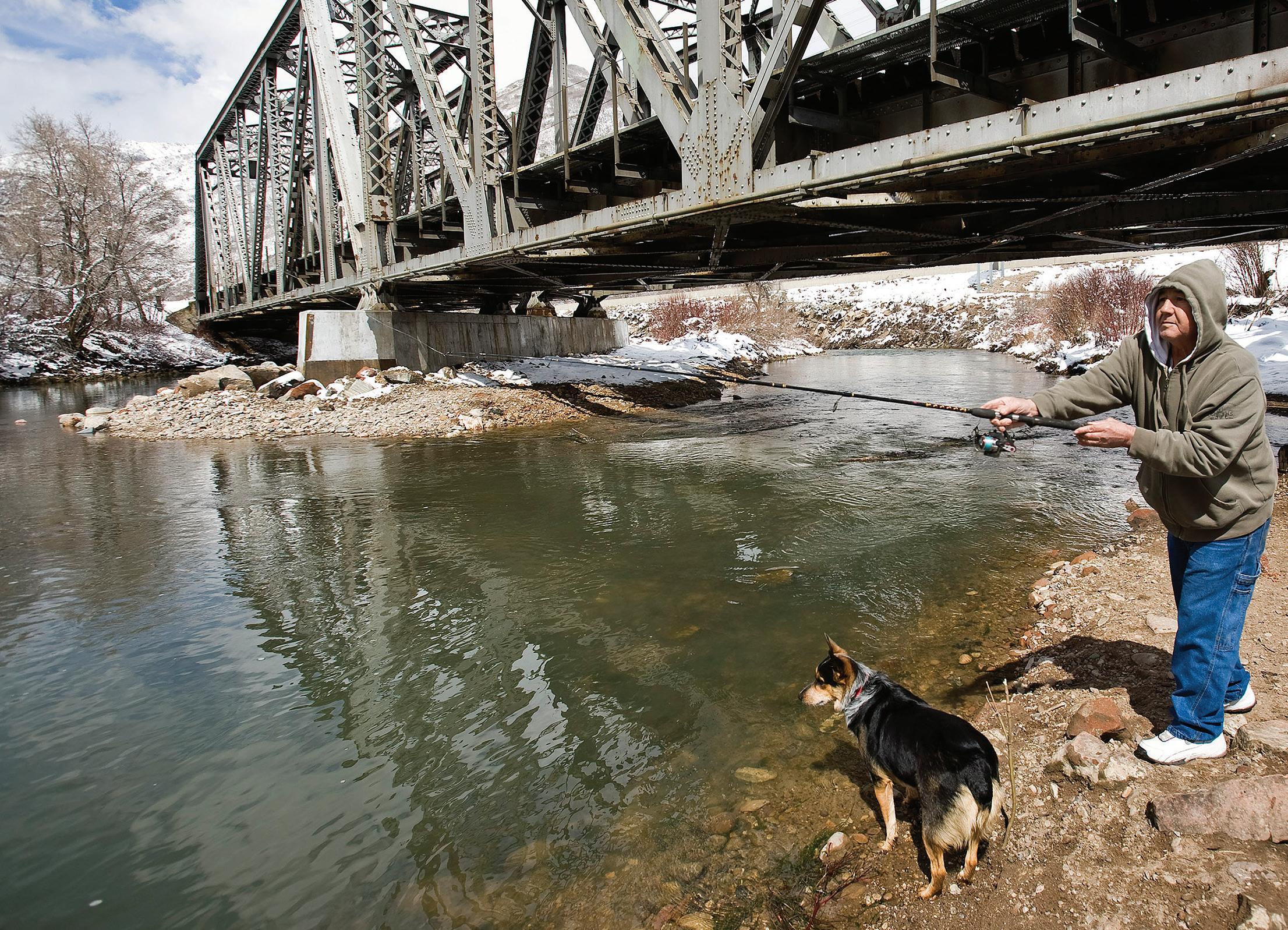
3 minute read
OUTDOORS
Photo by Lauren Layne
Montana Black Bear taken by Bryan and Kristie Nance.
Western Wasatch TROPHY ROOM


Photo by Jesica Cornia
Jim Linford poses with his grandchildren and their biggest Jim Linford poses with his grandchildren and their biggest catches of the day after fishing at Lake Viva Naughton. catches of the day after fishing at Lake Viva Naughton.


Blue Ribbon Waters in Northern Utah
Bear Lake
Bear Lake is home to thriving populations of lake and Bear Lake cutthroat trout, as well as the Bonneville cisco.
Weber River
The Weber is full of brown, cutthroat and rainbow trout, in addition to mountain whitefish.
Pineview Reservoir
Tiger muskie are the main draw here, in addition to catfish, crappie, bluegill, carp, small and largemouth bass, and yellow perch.
South Fork of the Ogden River
This is one of Northern Utah’s hidden gems, and features cutthroat and brown trout, and mountain whitefish.
Logan River
The Logan is home to cutthroat, brook, brown and rainbow trout, in addition to mountain whitefish.

Division of Wildlife Resources biologist Scott Tolentino pulls in a whitefish on Bear Lake near Garden City.
Standard-Examiner file photo
Explore Utah’s Blue Ribbon fi sheries
You’ve probably heard the term “Blue Ribbon fisheries” before, but do you know exactly what it means?
Utah is home to over 40 Blue Ribbon waters, a good portion of which are located in the northern area of the state. These are rivers, streams, lakes, and ponds that have been designated by the Division of Wildlife Resources and the Blue Ribbon Advisory Council as waters that have exceptional fishing quality, great outdoor experience, quality fish habitat and economic benefits.
To give you an example, think of some of Utah’s most popular waters — the Green, the Provo, Flaming Gorge, Pineview — these are all waters where the fishing is noticeably superior to places such as Matt Warner, Lost Creek or even Birch Creek.
Perhaps the most important part of a Blue Ribbon fishery is the quality fish habitat. Catching wild trout, bass or catfish is infinitely more enjoyable than playing the worn-out, dull-colored, lethargic hatchery fish. Blue Ribbon fisheries are home to habitat that is conducive to wild reproduction of fish, which gives anglers a better overall fishing experience.
Look at the Green River, for example. It’s a tailwater fishery that regularly draws visitors from all over the world — I’ve personally met a man from France

Standard-Examiner file photo
Ben Nadolski, right, and Craig Schaugaard from the Division of Wildlife Resources release tiger muskie into Pineview Reservoir in 2009. The sport fish are a sterile hybrid between a muskie and a northern pike and can grow to over 50 inches.

who came here to fish all over the West, with the Green being on his list — because of its large, wild, sometimes infuriatingly tough-to-catch trout.
Blue Ribbon fisheries can almost guarantee that same class of fishing all across the state.
Some Blue Ribbon fisheries are also managed to provide easier fishing for the anglers who aren’t as inclined to spend hours chasing big, wary fish. Strawberry Reservoir and Bear Lake both provide a Blue Ribbon experience alongside some relatively simpler fishing options.
Blue Ribbon fisheries cover the whole state, from Lake Powell and Minersville Reservoir to Bear Lake and Flaming Gorge. They can be fished with a variety of techniques, but many waters, like the Weber River from Echo to Wanship, are artificial fly and lure only.
Fishing with artificial flies and lures is the most ethical way to fish, and it causes minimal damage or harm to the fish. Us ing flies or lures is strongly encouraged on most Blue Ribbon fisheries.
Take your time exploring these Blue Ribbon fisheries, and take advantage of their great fishing opportunities. You won’t be disappointed.
This story was written by Spencer Durrant and originally appeared in the the Standard Examiner’s 2015 Outdoor Guide.











